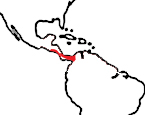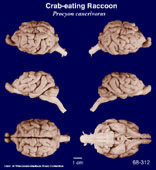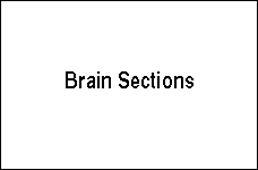|
Crab-eating
Raccoon
(Procyon cancrivorus) #68-312 |
||||
|
|
Physical
characteristics and distribution
|
|
Crab-eating
Raccoon Procyon cancrivorus |
|
Description
of the brain
|
|
Animal
source and preparation
|
|
All
specimens collected followed the same preparation
and histological procedure.
|
Other Related Resources (websites and publications)



